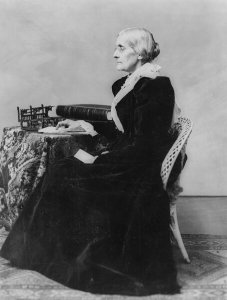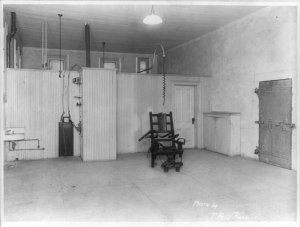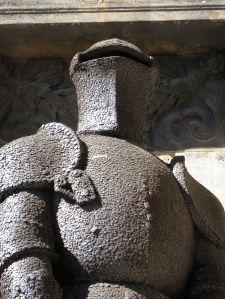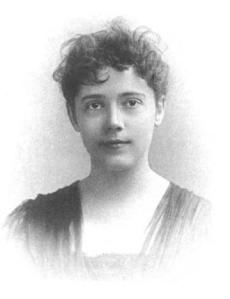I’m on a mission to let the world know that there was so much more to Nellie Bly than her asylum expose and her round the world adventure – amazing as those things were!
So in honour of International Women’s Day, here are 5 facts/stories about the wonderful Nellie that you may not know already. If you knew them all, or knew none of them, I’d love to hear from you.
1. She famously interviewed Susan B. Anthony

In February 1896, as the women’s suffrage movement blossomed in America, Nellie Bly interviewed Susan B. Anthony, eliciting some of the most personal answers to questions ever given by Anthony, then in her seventies. Here’s an exchange from Nellie’s report in The World:
“Were you ever in love?”
“In love?” she laughed merrily. “Bless you, Nellie, I’ve been in love a thousand times!”
“Really?” I gasped, taken aback by this startling confession.
“Yes, really!…. When I was young, if a girl married poor she became a housekeeper and a drudge. If she married wealth, she became a pet and a doll. Just think, had I married at 20, I would have been either a drudge or a doll for 55 years. Think of it!”
2. She was the first woman to witness an execution in 21 years

In January 1920, Nellie Bly reported on the execution by electrocution of Gordon Fawcett Hamby at Sing Sing prison.
Hamby, who had confessed to killing two bank officials during a robbery in Brooklyn, communicated with Nellie Bly in the run up to his death, and even sent her his Ouija board as, “a slight remembrance (all I have at this time) for your infinite kindness and friendship”.
Nellie was vehemently anti-capital punishment, writing, “I shall never cease to work to abolish this premeditated killing.”
3. She fundraised for Austrian widows and orphans during WWI

During World War I, Nellie Bly travelled to Austria to report for the New York Journal, but she became very engaged in supporting the Austrian cause and in particular widows and orphans. Throwing herself into war relief efforts in Vienna, she asked her readers back home in America to send quarters to her fund. Contributors would be rewarded by having their name inscribed in a gold book and a nail driven into a wooden statue in their honour. The Wehrmann in Eisen, (Iron Man for Austria) was one of many popular fundraising symbols in Austria made in this way, and in May 1916, Bly reported to her readers in the Journal that she had personally hammered one nail into the Wehrmann statue, for every person who had sent her a donation.
4. She always faced stiff competition from other aspiring women journalists

Famous as she undoubtedly was in her hey-day, Nellie Bly always had competition to deal with. Although one of the first female journalists, she wasn’t the first by any means. Even at The Pittsburg Dispatch, where her career began, there was already a well respected female journalist, Elizabeth Wilkinson Wade, who wrote under the pseudonym Bessie Brambles. At The World in 1887, no sooner had Bly had her hard-won success with her asylum expose, than another female journalist, Fannie Merrill, was vying for a slot in the Sunday edition with a similar style of reports to Nellie’s. Merrill’s article, Skilful Cigarette Girls came out on November 20th 1887, only a month after Nellie’s reports from the asylum. When she set of around the world in 1889, Nellie Bly had no idea that another woman journalist was running against her. Elizabeth Bisland set off heading west on a train from New York on the same day that Nellie sailed east from the city on a steamship and the two women circumnavigated the globe in the opposite direction. And at one point in the 1890’s, Nellie even faced competition from a conglomerate of female journalists, all publishing under the shared pseudonym, Meg Merillies.
5. She ran an informal adoption agency from a New York Hotel

When she returned to New York journalism after World War I, Nellie Bly wrote an opinion column in The Journal and publicly offered to help find homes for orphaned children.
In December 1919, a baby was found at Grand Central Station with a note that read – “To Somebody – for the love of Mike, take this kid… give him to Nellie Bly… he is seven months old and as healthy as they make them.”
The baby was taken to Bellevue Hospital where Nellie Bly rushed to visit him. But this was a story with several twists and turns. The baby, dubbed Love o’ Mike by the newspapers, was first claimed by the wrong family, the Wenzes, whose son had been kidnapped a few months earlier. When that story was publicized by Nellie Bly, the real mother came forward to reclaim her son, saying she’d hoped Nellie Bly would find him a better home than his family could offer, but that the Wentzes were barely any better off than she was.
For more about Love o’ Mike and Nellie Bly’s story, take a look at The Girl Puzzle, available to pre-order now from Crooked Cat books. (publication May 5th, 2019)
 Her published story is well known. But did she tell the whole truth about her ten days in the madhouse?
Her published story is well known. But did she tell the whole truth about her ten days in the madhouse?
Down to her last dime and offered the chance of a job of a lifetime at The New York World, twenty-three-year old Elizabeth Cochrane agrees to get herself admitted to Blackwell’s Island Lunatic Asylum and report on conditions from the inside. But what happened to her poor friend, Tilly Mayard? Was there more to her high praise of Dr Frank Ingram than everyone knew?
Thirty years later, Elizabeth, known as Nellie Bly, is no longer a celebrated trailblazer and the toast of Newspaper Row. Instead, she lives in a suite in the Hotel McAlpin, writes a column for The New York Journal and runs an informal adoption agency for the city’s orphans.
Beatrice Alexander is her secretary, fascinated by Miss Bly and her causes and crusades. Asked to type up a manuscript revisiting her employer’s experiences in the asylum in 1887, Beatrice believes she’s been given the key to understanding one of the most innovative and daring figures of the age.

One thought on “5 lesser known facts about Nellie Bly for #InternationalWomensDay”